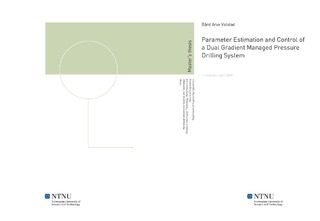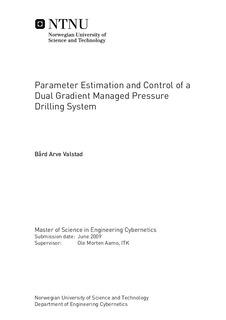| dc.description.abstract | The increasing demand for oil and gas in the world, and the fact that most of the easily accessible reservoirs are in production or already abandoned, result in a need to develop new resources. These may be new reservoirs that have previously been considered uneconomical or impossible to develop, or extended operation of existing fields. Developing smaller reservoirs, means that more wells have to be drilled per barrel, which gives both more and eventually greater challenges as more and more wells are drilled because the wells has to be drilled further and into more difficult formations. Mature fields are drained, which leads to lowering of reservoir pressure and therefore tighter pressure margins for drilling. Because of the challenges with deep water drilling and depleted reservoirs, there is a need to precisely control the pressure profile in the well during drilling in such formations. Some of the parameters that are needed to control the well precisely are not easily obtained during drilling, and an estimation of these will therefore be crucial to be able to use a model to control the well. The transmission of measurements from a well is also often either delayed or absent during periods of drilling, which will cause problems for the control of the well. It is therefore required that an estimation scheme is able to estimate the pressure in the well for the time interval between the updates of the measurements from the well. The conventional method for transmitting measurements from the bottom of the well is by mud pulse telemetry which is pressure waves transmitted through the drilling mud. These measurements will be delayed, so accurate real-time measurements will never be available. To estimate the bottom hole pressure, a extended kalman filter was evaluated. This filter is based on a simple mathematical model derived for the drilling process. The states in the filter is height of mud in the riser, mud weight and different friction factors for the well. The filter is tested when the measurements are continuous available, with delayed update of the bottom hole measurement, and for cases where one of the measurements are absent. A simple controller to control the bottom hole pressure is implemented to control the pressure for reference tracking and during a simulated pipe connection. During simulations, it was not possible to achieve convergence for the friction factor for normal flows, and this led to errors in the other states. The friction factor would only converge to its true value during very high flows during the nominal testing, which led to the other states also achieving their correct values. The problem in estimating the friction factor applied to all different forms for friction parameters. The kalman filter was tested against an artificial well simulated in WeMod, and gave decent estimates of the bottom hole pressure except for at low flows. | nb_NO |

